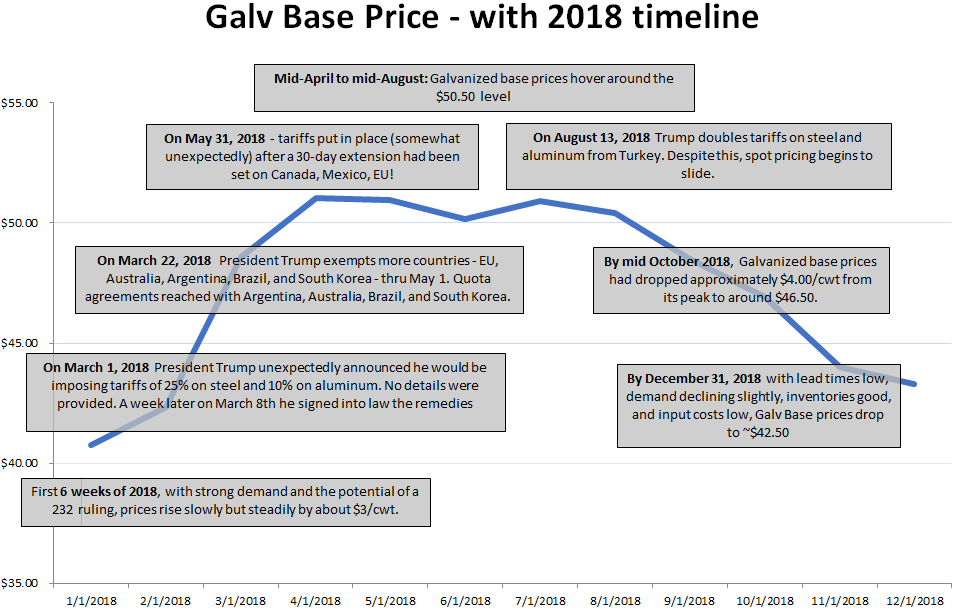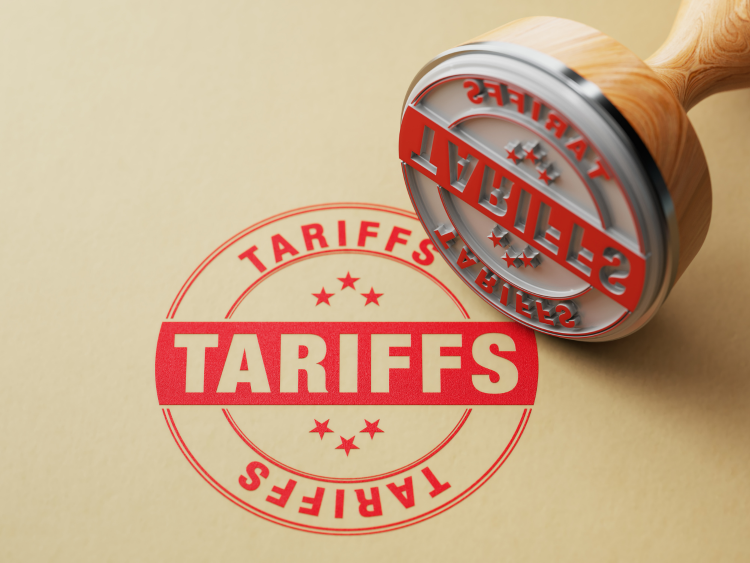Steel Products

HARDI: HVAC Market Looks Positive in New Year
Written by Tim Triplett
January 8, 2019
The new year has gotten off to a positive start, though declining steel prices remain a concern for members of the Heating, Air-conditioning and Refrigeration Distributors International, who supply steel products to the HVAC market. As one HARDI member commented during the trade group’s monthly conference call on Tuesday, “Some of us feel like Alabama’s football team today, a bit nauseated. Selling steel that you bought when the price plateaued is not for the faint of heart. But demand is still decent. Contractors have a lot of work going on.”
![]() Steel prices have been on the decline since mid third quarter, reported John Packard, Steel Market Update president and publisher. Lead times for galvanized are short at less than seven weeks as the mills remain willing to negotiate on spot orders. The price of galvanized has dropped below $40/cwt as domestic producers have priced their products aggressively to compete with imports. “And I think there is room for prices to fall even further,” Packard said. “Scrap is settling down $30-40 a ton for January. That does not behoove the mills to go out for a price increase right away.”
Steel prices have been on the decline since mid third quarter, reported John Packard, Steel Market Update president and publisher. Lead times for galvanized are short at less than seven weeks as the mills remain willing to negotiate on spot orders. The price of galvanized has dropped below $40/cwt as domestic producers have priced their products aggressively to compete with imports. “And I think there is room for prices to fall even further,” Packard said. “Scrap is settling down $30-40 a ton for January. That does not behoove the mills to go out for a price increase right away.”
On a positive note, the HARDI members agreed that demand is generally strong in most parts of the country. “If you are not looking at the stock market, things are pretty healthy. It’s hard to get an accurate read on demand around the holidays, but we have been steady since then,” said one distributor.
Demand looks to be upbeat in January following some seasonal slowing during the holidays, agreed another HARDI member. With the winter weather relatively mild and contractors with backlogs, the order rates in January have been strong. “At least the first half of 2019 will be good,” he said, “based on conversations we’ve had with contractors.”
“We thought we might see some hesitancy in the market, but people remain fairly busy. So far in 2019, we are seeing consistent requests for quotes and jobs on the table. 2019 is shaping up fairly well. It just depends on how the mills decide to play this,” commented another executive.
Until the next price increase is announced, distributors must manage their inventories and replacement costs carefully, cautioned another HARDI veteran. It’s a delicate balance while waiting for the price to find a bottom. “If lead times push out when the milder weather comes, hopefully the price will turn around,” he said.
Steel Market Update participates in a monthly steel conference call hosted by HARDI. The call is dedicated to a better understanding of the galvanized steel market. The participants are HARDI member companies who are wholesalers, service centers and manufacturing companies that either buy or sell galvanized sheet products used in the HVAC industry.
 Graphic courtesy Conklin Metal Industries
Graphic courtesy Conklin Metal Industries

Tim Triplett
Read more from Tim TriplettLatest in Steel Products

CRU: US stainless prices to rise on expanded S232 tariffs
Stainless prices in the US market will rise, following price increases by major US producers. Our base case scenario incorporates higher US prices in the near term, despite the initial negative reaction by the market. US stainless prices will go up in 2025 H2 and will stay elevated in 2026 as tariffs on stainless […]

Galvanized steel demand unsteady amid lingering buyer fatigue: HARDI
Uneven demand for galvanized steel in June reflects a market that remains mired in uncertainty, according to industry sources.

OCTG industry salutes Customs for catching trade crooks
The US OCTG Manufacturers Association is commending US Customs for intercepting another Thai company's attempt to illegally transship Chinese oil pipe to the US.

Whirlpool says tariffs will bolster business
“Economically, the business case for products made in the us has become a lot more attractive," the CEO told Fox Business.

Worthington Enterprises buys Elgen Manufacturing
Worthington Enterprises acquires HVAC products maker Elgen Manufacturing.
